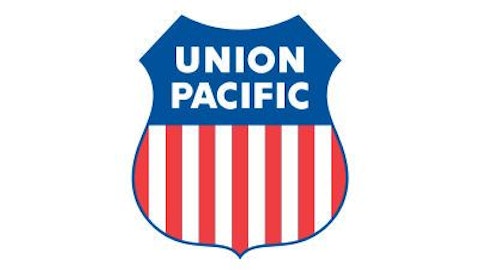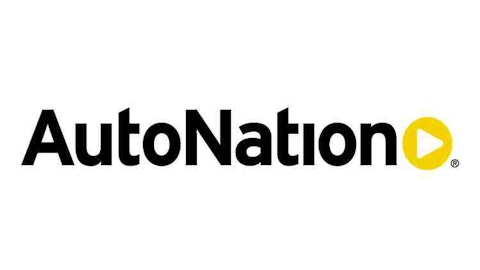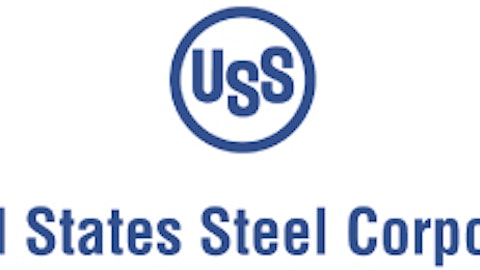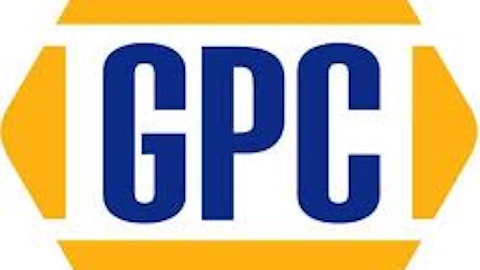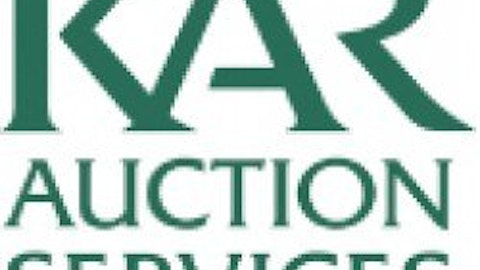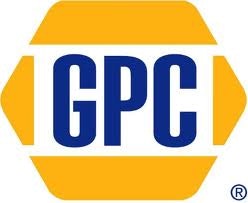
Shares of Atlanta-based Genuine Parts Company (NYSE:GPC) have been star performers lately. They are up 37% year-to-date, and are trading at all-time highs. This is stronger than both the 15% rise in the S&P 500 during the same period, as well as the average 20% rise for its peer group, as represented by the First Trust NASDAQ Global Auto Index ETF. We believe that the stock has run-up a bit too fast, and is now in over-valued territory, especially as compared to its peers.
Most people aren’t familiar with Genuine Parts Company (NYSE:GPC). However, as the parent company of the National Automotive Parts Association (NAPA), its auto parts stores are popular among auto mechanics and do-it-yourself vehicle owners. The company distributes over 422,000 auto replacement parts through its 64 strategically located NAPA distribution centers and approximately 6,100 NAPA auto parts stores nationwide, including about 1,100 company-owned stores. The automotive parts division accounts for about half of the revenues and profits, with the remaining three divisions, namely industrial parts, office products and electrical/ electronic materials accounting for 34%, 13%, and 4% of sales respectively.
In the latest March quarter, Genuine Parts Company (NYSE:GPC) reported flat sales and earnings compared with a year ago. The was due mostly to a strong March quarter in 2012, when sales and earnings were up 7% and 16% year-over-year respectively, and subsequent slow-down in the second half of 2012 due to the softening economy. Also, the current March quarter had one less sales day than the prior year quarter. The company missed both revenue and earnings estimates, reporting $3.20 billion and $0.93 per share v/s consensus analyst estimates of $3.28 billion and $0.99 per share respectively.
Genuine Parts Company (NYSE:GPC) shares currently trade at 17-18 times forward earnings for FY 2014, and at 4.2 times book value, compared to averages of 15.0 and 2.5 for its peers in the large-cap auto & truck replacement parts group. Earnings meanwhile are projected to rise at an 8.8% annual growth rate from $4.14 in FY 2012 to $4.90 in FY 2014, compared to the projected 25% annual earnings growth rate projected for its peers. The company’s current P/E ratio of 20.3 is near the high-end of its historic P/E range between 10 and 20.
In the table below, we compare the relative valuation of Genuine Parts Company (NYSE:GPC) to its peers in the automotive industry, namely nationwide auto parts retailers

As seen in the table, Genuine Parts Company (NYSE:GPC), with a price/ earnings to growth (PEG) ratio of 1.95, has a lower earnings growth rate, and is over-valued on a P/E basis, compared to its peers. In contrast, its peer AutoZone, Inc. (NYSE:AZO) with a PEG ratio of 0.89 is more attractive, given that it has a higher earnings growth rate and a lower P/E multiple.
The PEG ratio is a valuation metric, popularized by legendary investor Peter Lynch, as a way to compare price-to-earnings of companies with different growth rates. The argument is that companies with higher growth warrant higher multiples, as will be evident by conducting a more detailed discounted cash flow (DCF) analysis. The PEG ratio then delivers an approximate way for comparing stocks in similar industries.
Company may have overpaid for recent acquisition
Genuine Parts recent acquisition of the remaining 70% stake in Exego Group, a leading aftermarket distributor of automotive replacement parts and accessories in Australia and New Zealand, with revenues of more than $1 billion and more than 430 stores, is promising as it will increase total revenue by about 8% and give it a foothold in the Australasia market.
However, the company may have overpaid for this acquisition, as it negotiated the acquisition of the original 30% stake in September 2011 for $150 million, valuing the company at $500 million. But in the recent transaction, it paid $800 million for the remaining 70% of the company, valuing it at over $1 billion.
